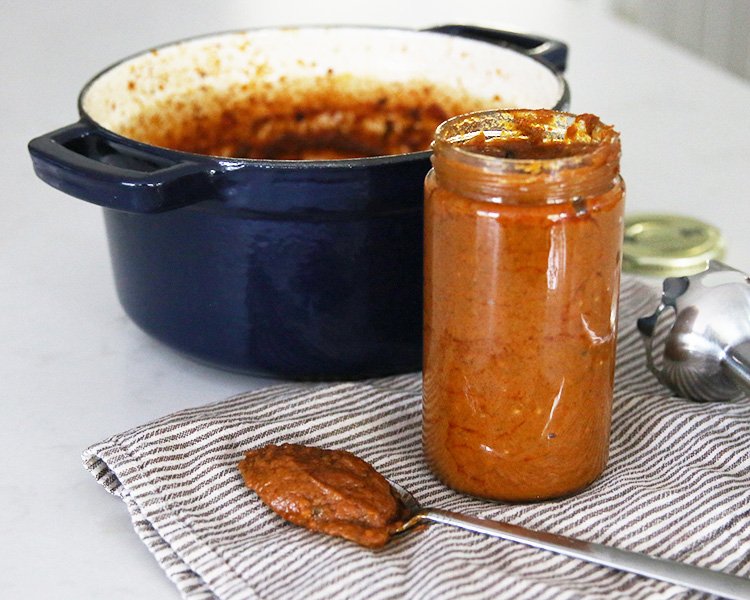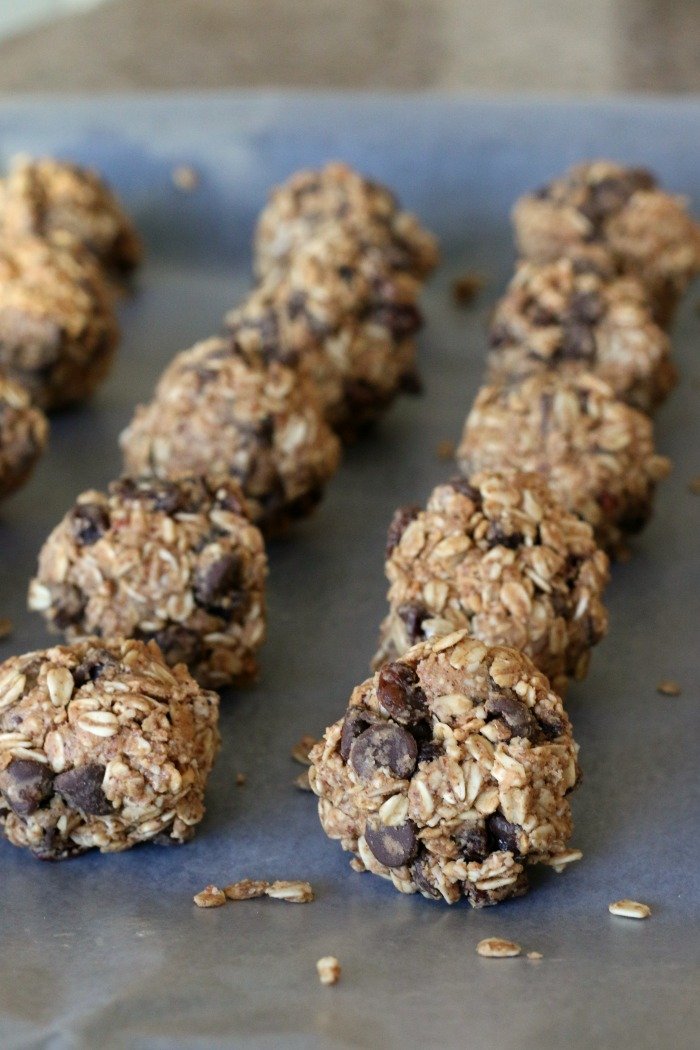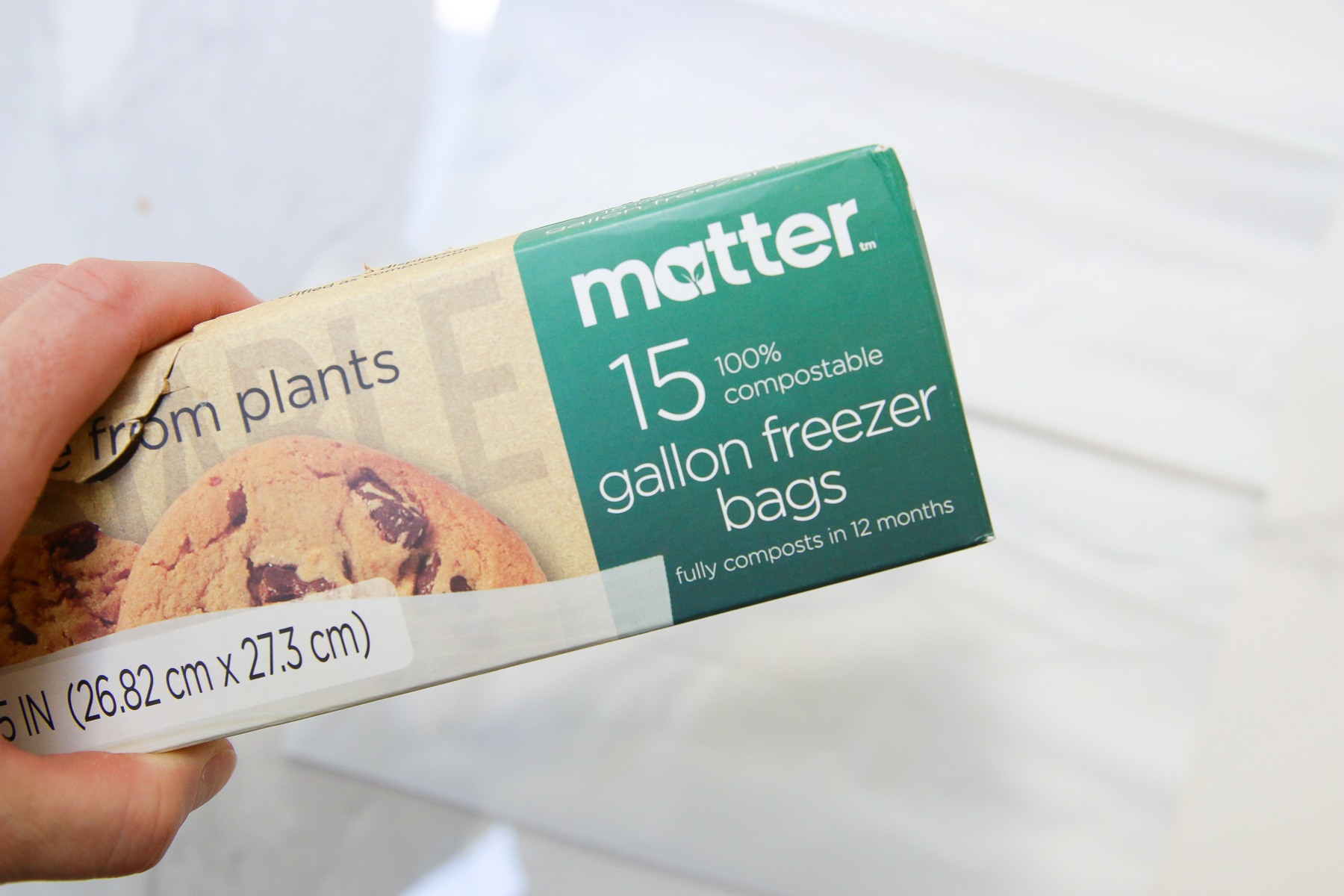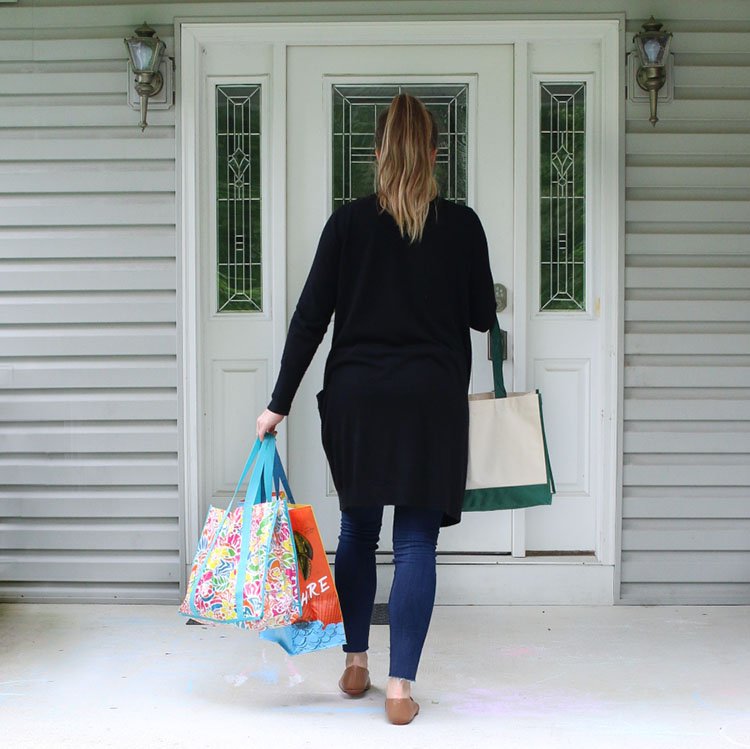Your Composting Food Scraps Shouldn’t Smell and Here’s How
So you’re thinking about composting at home but worried about smelly food scraps stinking up your kitchen? Have no fear. Composting food scraps shouldn’t smell and collecting food scraps for composting does not have to be disgusting. I promise! Let me show you how.
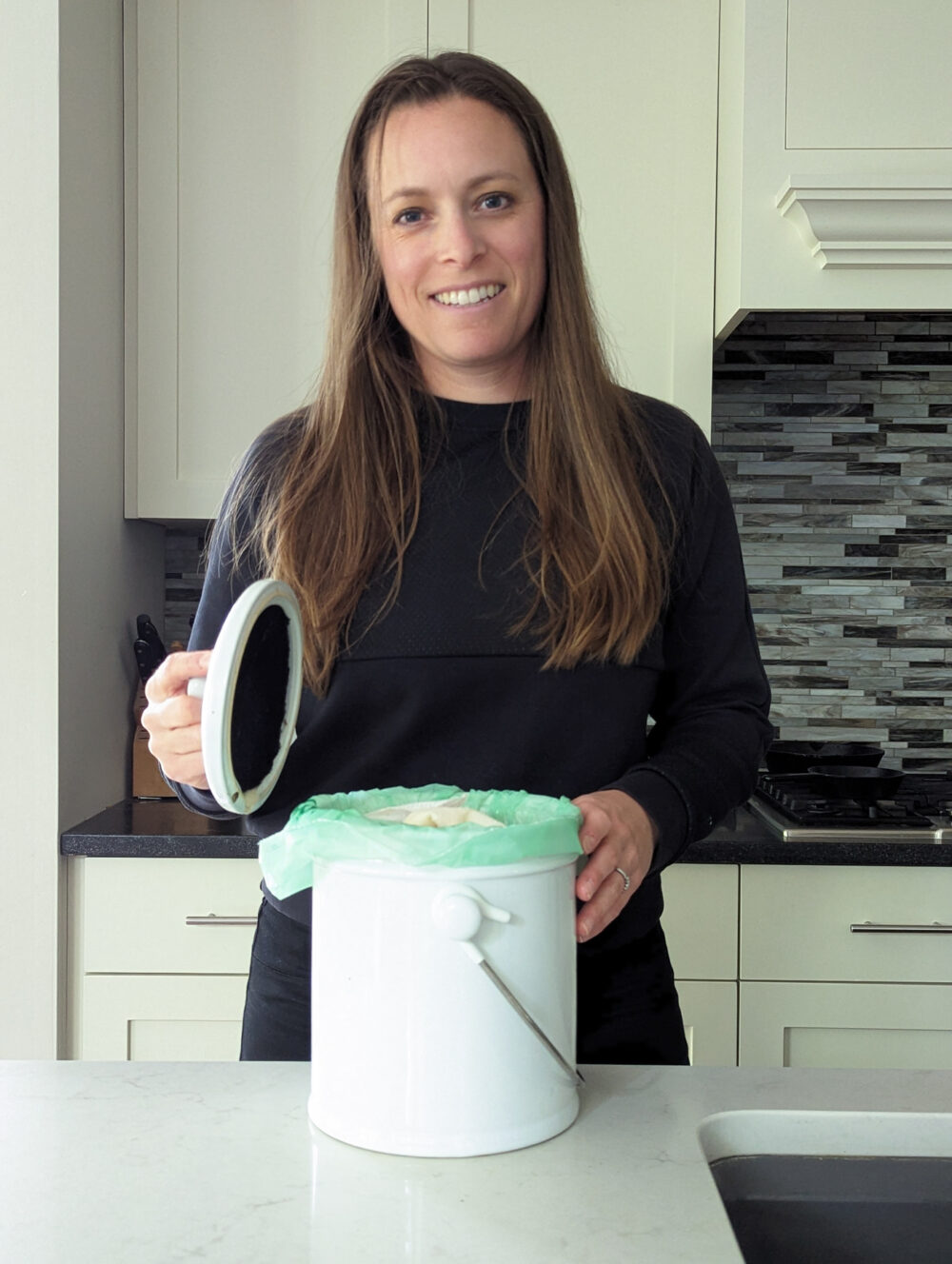
About a year ago, I had a conversation with a friend who told me they didn’t want to compost at home, using a drop-off service, because they were afraid a bucket of food scraps would lead to a stinky kitchen infested with bugs. At the time, they did not have a garbage disposal and were tossing their food scraps in a trash can (without a lid) under their sink.
I suggested that instead of putting their food scraps in the trash can, they put them in a 5-gallon bucket with a paper bag liner and air-tight top next to their current trash can under the sink. Doesn’t seem that different right? Maybe even better? But there’s a stigma about that.
One of the biggest obstacles to composting at home is the fear of smelly food scraps in the kitchen. But I think this fear is way overblown – in part due to lack of education and also to misleading marketing from companies with products that claim to solve this problem.
With a few tips and good habits, collecting food scraps in a separate waste container from non-organic waste is no dirtier or smellier than putting everything in the same bin together (or even sending them down your disposal – which has a whole host of other consequences for our old and ailing wastewater management systems). Let me show you how you can be part of the composting solution without compromising a clean kitchen.
Note: There are so many ways to compost or recycle our organic waste. I am not suggesting that everyone should have compost bins in their yard or manage the processing of their food scraps into a finished, usable soil amendment.
I’d like to see wide-scale organics (i.e. food waste) pick-up systems to make organic recycling as easy and accessible as possible for everyone. The discussion below relates specifically to separating and storing food scraps temporarily until they are ready to be sent into whatever compost processing system is most easily available to you.
Separating food waste from non-organic waste is nothing new
People have been separating food scraps for composting in their kitchens in other countries for decades. This is not a new habit, and their kitchens aren’t pest-infested garbage halls. Just because it feels new to people in the United States doesn’t mean it’s new.
Moreover, we’ve been living with food waste in our kitchens for as long as we can remember. No one thinks they should skip collecting their trash because the food scraps in their trash bin smell. They simply understand that part of being a responsible adult without a filthy kitchen includes periodically disposing of your trash in an appropriate receptacle. And if you leave your trash in your kitchen trash can for weeks, it’s going to get disgusting.
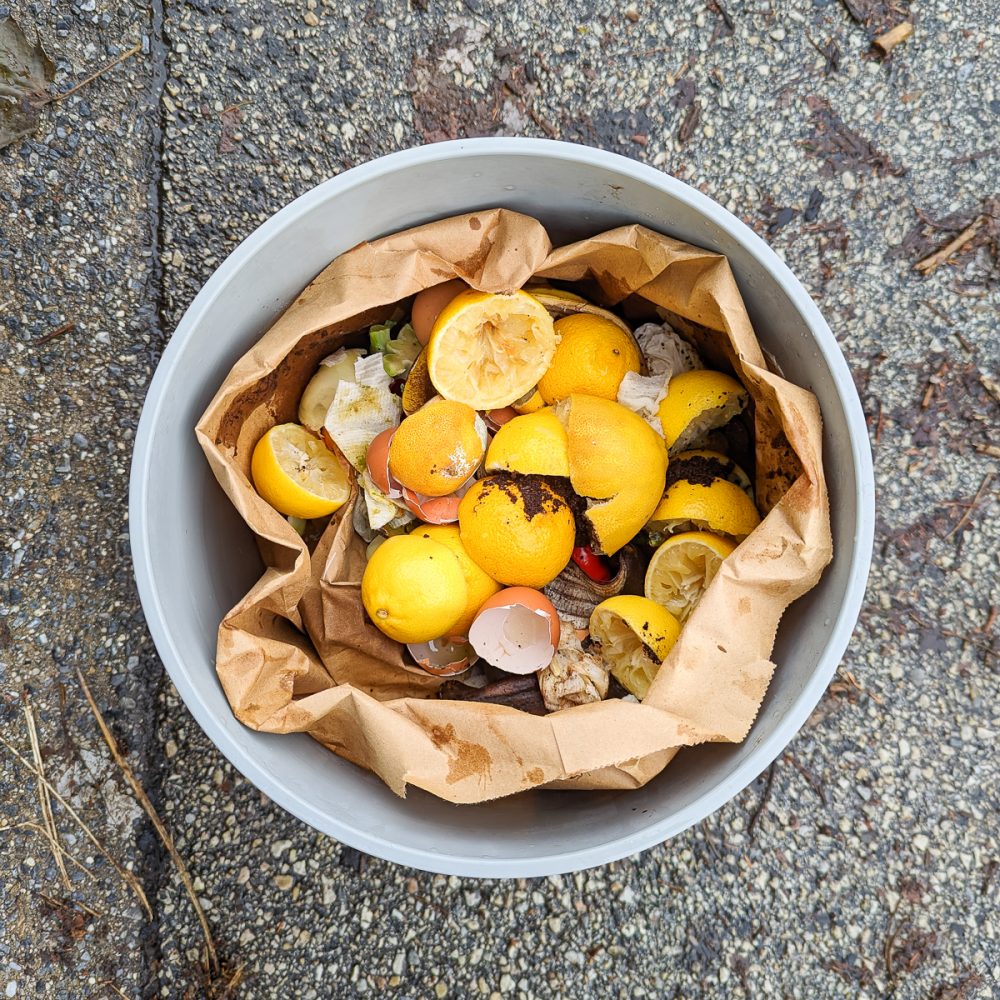
Food waste in a trash can isn’t smellier than food waste in a compost bucket
If you separate your food scraps from your open bin trash can and instead put them in the closed-lid compost scrap bucket next to it, the food scraps don’t get any smellier or more disgusting. (As a side note, if you have a garbage disposal and don’t put food waste in your trash can, you probably have a friend without a garbage disposal who does put food in their trash. And I bet you don’t think their kitchen is a filthy mess of food waste.)
I’d argue that separating your food scraps makes them smell less. I think most composters would agree. Food waste bins often have charcoal filters built into their lids to keep out bugs and odors contained. Also, you don’t have to take the rest of your trash out as often because without food waste in it, your regular trash doesn’t get gross or fill up nearly as quickly.
Just like with a trash can, a liner in your food waste receptacle makes a world of difference. Can you imagine how dirty your trash can would get if you didn’t use a trash bag? So why would we not use compostable liners in our food waste bins?
You don’t need a liner bag in your food scrap bin and I didn’t use them for years – though you need to clean out the container after each use if you skip it. But if you’re worried about the bucket getting gross, a brown paper bag or bioplastic liner in your food scrap container or bucket is a game changer in terms of keeping it clean (and it keeps bugs out too when you tie it up and set it out in a green bin for curbside collection later on). Just like our trash…
We’ve been down this road before, and we have decades of experience to give us an idea of some best practices. As with your trash, you still need to move the food scraps to an appropriate waste receptacle with regularity. Taking out your food scraps to maintain a stink-free kitchen is just part of typical adulting. And a little education in this area will go a long way
If you’re Compost Curious but worried about a stinky food waste bucket, let’s walk through three food scrap storage options to make sure that your food scraps don’t smell before you drop them in a pile, hand them off to a pickup service, or put them into whatever composting system makes sense for you.
Choose how to store your food scraps
There are lots of different ways to store your food scraps for putting them into whatever compost system you choose to use. I shared another post with a whole bunch of ideas about how to store food scraps for composting at home as well as general tips to prevent kitchen compost bins from smelling. But let’s discuss a few of the most common options people use. And how to prevent your food straps from smelling or being disgusting.
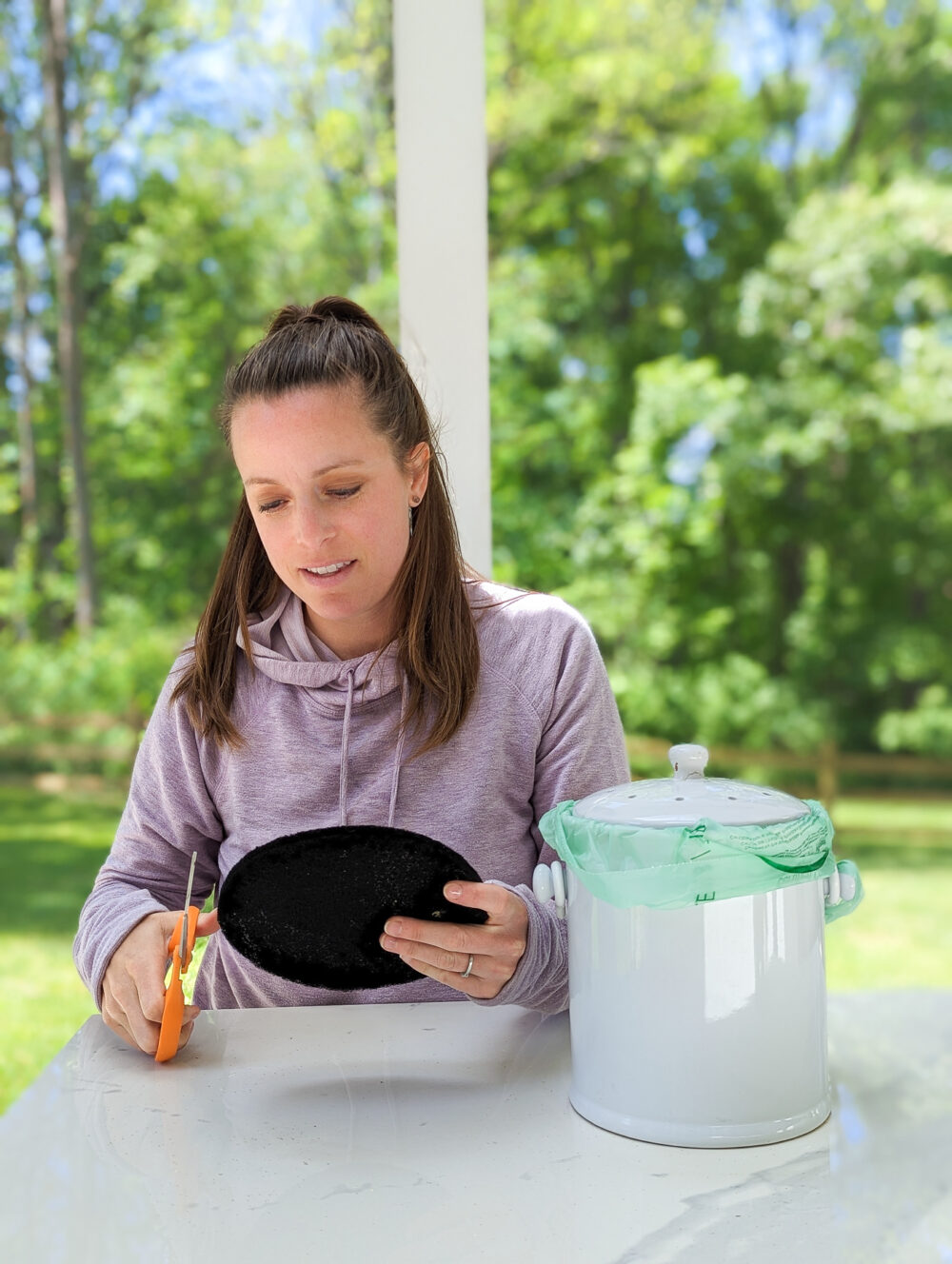
Option 1: Store your food scraps on your counter
Lots of people store their food scraps in a small compost bucket on their kitchen counter. For simplicity’s sake, let’s call this a countertop compost bin.
Typically, someone will add food scraps to this countertop compost bin throughout the day and empty it once every 2 to 5 days depending on how often they add food scraps and how quickly it fills up.
Then they transfer food scraps from this kitchen bin to either their outdoor composting system or to a larger collection bucket like a 5-gallon plastic bucket with an airtight lid or a municipal green bin for pickup service or drop off at some local community composting location.
For those who prefer using a countertop kitchen bin to collect food scraps as a first step, let’s talk about ways to keep that countertop kitchen compost bin clean.
1. Use a charcoal filter under the lid
First and foremost, be sure to get a compost bin with a charcoal filter built into the lid. The charcoal filter helps to keep any odors inside the bin. By doing this, it also reduces the potential for the bin to attract bugs and lead to any infestation. Unless you very diligently manage and regularly clean a countertop kitchen compost bin, you will likely not be happy with your experience if the bin does not have a charcoal filter underneath the lid.
2. Put a compostable liner in your countertop compost bucket
Just as you would use a trash bag in your trash can, add a new compostable liner to the inside of your countertop bin each time you empty it. You can use a bioplastic liner, a brown paper bag liner, or any type of compostable liner to help prevent the inside of the bucket from getting mucky over time.
If you’re especially concerned about the gross factor, I highly recommend a compostable liner that you can tie closed. This will help keep your green bin, 5-gallon plastic bucket, or similar alternative much cleaner and less likely to attract pests.
3. Add everyday kitchen paper products to your countertop compost bin
If you use paper towels or paper napkins, receive newspapers or paper junk mail, buy eggs in cardboard containers, or have school papers from your kids, any of these can go in your countertop compost bin to help keep it clean.
These types of products are called compost browns, and because they are relatively dry, they help to absorb moisture from the food scraps. Adding them to your countertop compost bin periodically reduces the likelihood that your food scraps get slimy, stinky, or attract bugs.
The items I listed above are just a few examples (not an exhaustive list), but they give you an idea of the types of compost browns you might already have that can help keep your bucket clean.
In some cases, you can recycle these paper products (though not always, depending on how you use them). But even if recycling is an option, throwing some of them in your countertop bin from time to time will significantly reduce any potential slimy, muckiness in your bin. No fancy dehydration machines are needed here. The paper products will do that work for you.
And even for those of us who rely primarily on reusable cloth towels and napkins, we typically have some type of compostable paper products coming into our homes despite our best efforts. Let’s put them to good use.
4. Give your bucket a quick rinse periodically
From time to time, after emptying your countertop kitchen bin, give it a quick rinse in your sink. Maybe once a month, I wash it with soap and water. But for the most part, a quick rinse with water before letting it dry will go a long way toward keeping your countertop compost bucket clean.
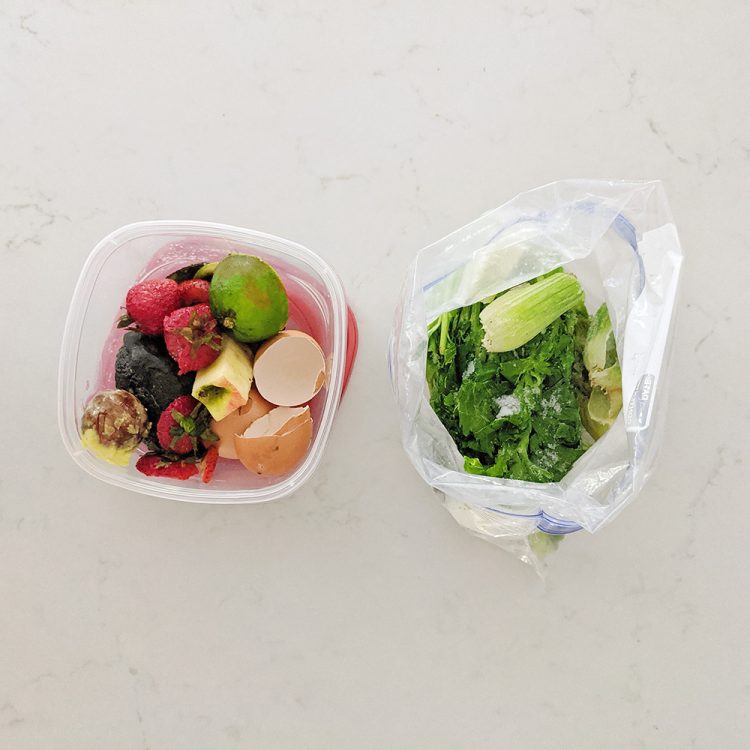
Option 2: Store your food scraps in the freezer
Some people choose to store their food scraps in their freezer in a plastic bag, a repurposed plastic container like those used to package leafy greens, or another reusable container.
If you have space in your freezer to freeze your food scraps, this can be a really easy option. You might find it’s most convenient to keep a bowl on your counter while preparing food, and then empty the bowl into your freezer bag once or twice a day. Do what suits you best. But frozen food scraps won’t make your freezer smell and certainly won’t get disgusting or attract bugs.
Keep in mind, however, that those food scraps may get gross once you remove them from your freezer and they start to thaw in a green bin, for example, if you use a pickup service. Thus, you may not want to take the food scraps out of your freezer until you’re nearly ready to put them into whatever composting system you use. Or you could put them in an enclosed compostable bag to limit their exposure to bugs and contain any odors that eventually may develop.
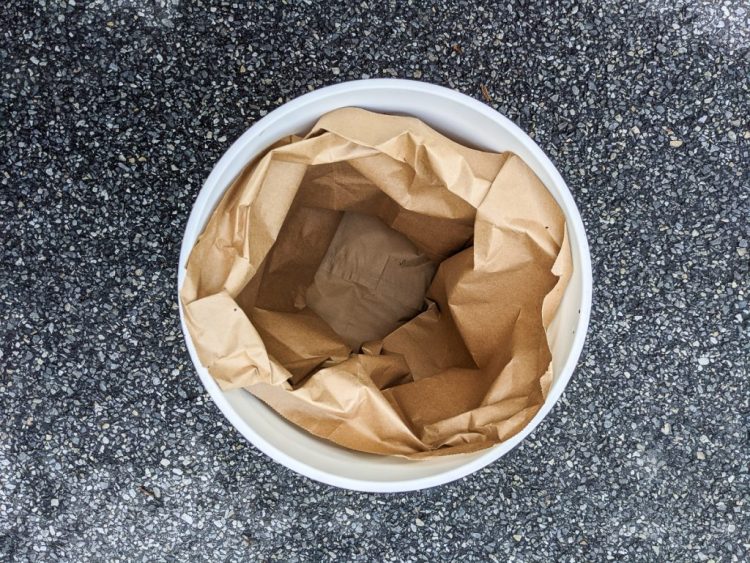
Option 3: Store your food scraps in a 5-gallon (or similar) bucket with a lid
We use a countertop compost bin to collect food scraps and then empty it into a 5-gallon bucket in our garage every few days. Also, many people collect food scraps in a bowl or container with each meal and put the food scraps directly into the 5-gallon bucket after each cooking session. You can use either of these methods if they make sense for you. If you use either of these methods, here are some tips to keep that 5-gallon bucket from getting gross.
1. Put a brown paper bag liner in the bucket
After running my own curbside composting pickup business for 2 years and emptying a lot of 5-gallon plastic buckets, using a large brown paper bag as a bucket liner makes a world of difference in keeping the bucket clean. You can buy these in bulk online, but I just get them from my grocery store when buying groceries as needed.
I usually bring my own bags when I shop at the grocery store. But I will make a point to get one or two brown paper bags if I need them. We also have our groceries delivered often, so I request brown paper bags for delivery since I can’t use reusable bags with that service.
You only need to replace the brown paper bag each time you empty the bucket. For us, we use two brown paper bags per month. That may vary for you depending on how often you empty your plastic bucket, but you probably won’t need a lot of them. I bet you could even request them in a community gifting group, like a Buy Nothing group, or request them from friends.
Many companies make bioplastic liners for 5-gallon buckets or other large organic waste containers. For home composters, I highly recommend a brown paper bag liner over a bioplastic liner for the larger buckets. The brown paper bags help to absorb moisture and are also thicker so they break less often and create a more durable liner between food waste and your bucket. I found them to be much more effective in keeping the buckets clean than bioplastic liners.
2. Add browns to keep the bucket clean
As I mentioned above with the countertop kitchen bin, adding browns to your compost bucket or green bin will help to keep it clean and dry. If you already add browns into the smaller bags from your countertop ben, you may not need extra browns in your larger bucket, though they won’t hurt. But if you put food waste directly into your 5-gallon bucket, making it a habit to add compost browns and food scraps (i.e. compost greens) will keep the bucket much cleaner and drier.
3. Keep the bucket in the shade or a cooler area
Heat helps organic waste, including food scraps, break down and decompose more quickly. It also creates a more welcoming environment for bugs like fruit flies and maggots. Keeping your bucket in a shaded or cooler area will reduce the likelihood that it becomes infested with creepy crawlies.
We keep our larger bucket in our garage which generally stays cool enough throughout our hot summers to prevent any significant growth of pests inside the bucket. If you live in an apartment or don’t have a garage, you could keep your bucket under your kitchen sink or in a closet if you have space.
Even if you don’t have a place to keep the bucket that’s not hot, adding plenty of dry compost browns should limit the moisture levels enough to keep the bucket from getting gross. Fruit flies, maggots, and other gross bugs need moist environments to flourish.
4. Rinse the bucket after emptying
After you empty the bucket, give it a quick rinse. It doesn’t need a full wash, but a rinse with water helps keep it clean.
We already do this with trash and recycling
Notice that these are all habits we already apply to our trash cans and often to our recycling bins. If we don’t manage them responsibly, they get gross. But we take care of them with diligence because it works.
And once it becomes part of our daily habits, it’s not hard or particularly stressful. At first, it might seem like a lot of steps to keep compost bins clean. Liners, browns, tie the bag closed, and rinse the container… all the things.
But these are essentially the same steps we take for trash and recycling. They’ve just become second nature. Incorporating composting (i.e. sorting our food waste for composting, not managing compost processing bins) into our family kitchen management habits becomes second nature quickly too if we just give it a chance.
If you like this post on food scrap storage options, you might also like
7 Simple Tips to Prevent Kitchen Compost Bins from Smelling
9 Types of Free Compost Browns | The Simplest Fix For Slow and Slimy Compost Bins
Finished Compost: Timeline From Food Scraps to Soil Amendment

Jen Panaro
Jen Panaro, founder and editor-in-chief of Honestly Modern, is a self-proclaimed composting nerd and advocate for sustainable living for modern families. To find her latest work, subscribe to her newsletter, Stepping Stones.
In her spare time, she’s a serial library book borrower, a messy gardener, and a mom of two boys who spends a lot of time in hockey rinks and on baseball fields.
You can find more of her work at Raising Global Kidizens, an online space to help parents and caregivers raise the next generation of responsible global citizens.

